Daylily Garden Ideas: Brighten Your Yard with Colorful Blooms
Daylilies are a wonderful addition to any garden. These hardy plants come in a variety of colors and sizes, making them a versatile choice for garden enthusiasts. Whether you’re looking to add a splash of color to your yard or create a focal point, daylilies offer endless possibilities.

What makes daylilies so appealing is their ability to thrive in a wide range of conditions. They are easy to care for and can bloom for several weeks, providing lasting beauty to your outdoor space. Daylilies are ideal for both beginners and experienced gardeners who want reliable and stunning flowers.
1) Colorful Daylily Borders

Creating colorful daylily borders can make your garden look amazing. Daylilies come in many colors, like red, yellow, orange, and pink. This makes it easy to create a dazzling display.
Mixing daylilies with other plants, such as hostas and impatiens, adds variety and depth. Different heights offer visual interest.
Planting daylilies in a sunny spot where they get at least six hours of sunlight daily helps them thrive. You’ll enjoy their blooms all season long.
2) Mixing Daylilies with Perennials
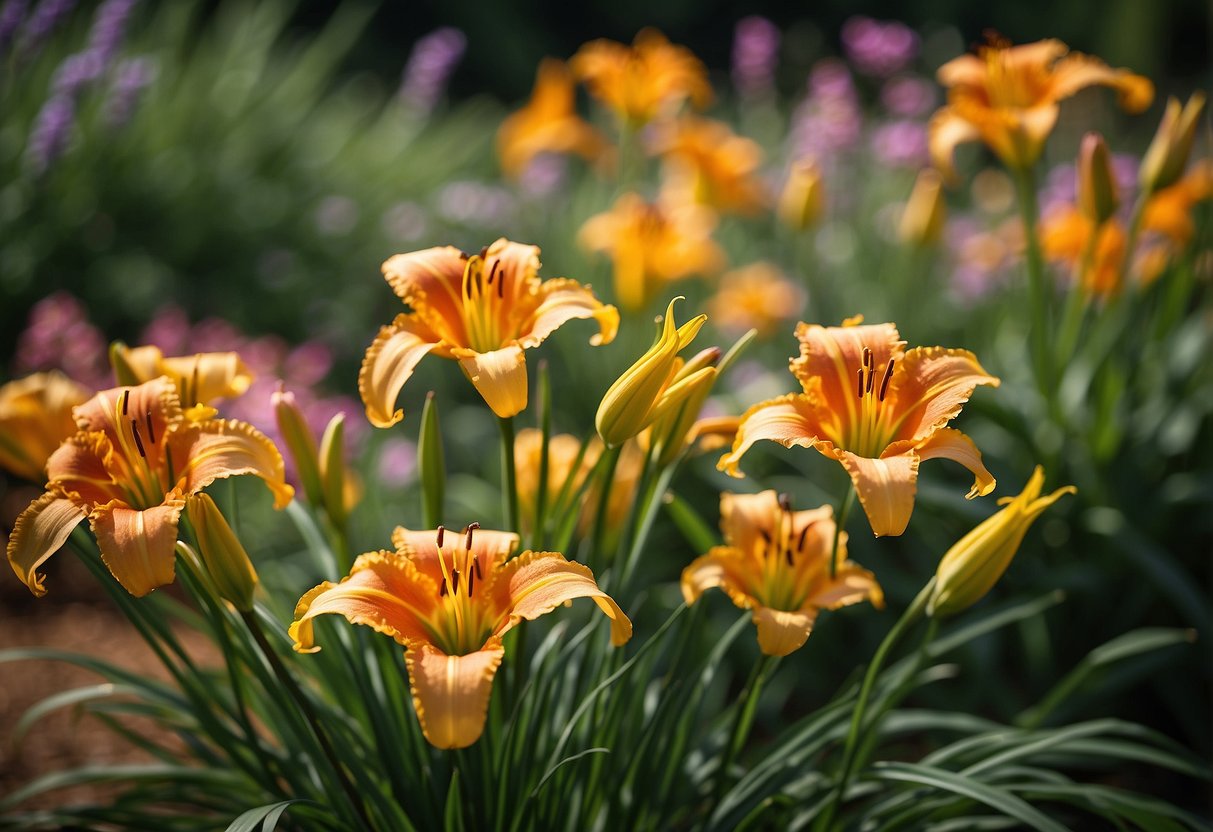
Mixing daylilies with perennials can make your garden look lively and colorful. You can choose irises to pair with daylilies. The unique shapes and bright colors of irises stand out well with daylilies’ vibrant hues.
Adding Shasta daisies creates a cool contrast with their white petals and yellow centers. They can enhance the beauty of your garden.
Consider including Hostas for their lush foliage. Their green leaves complement the bright colors of daylilies.
3) Daylilies for Full Sun Areas
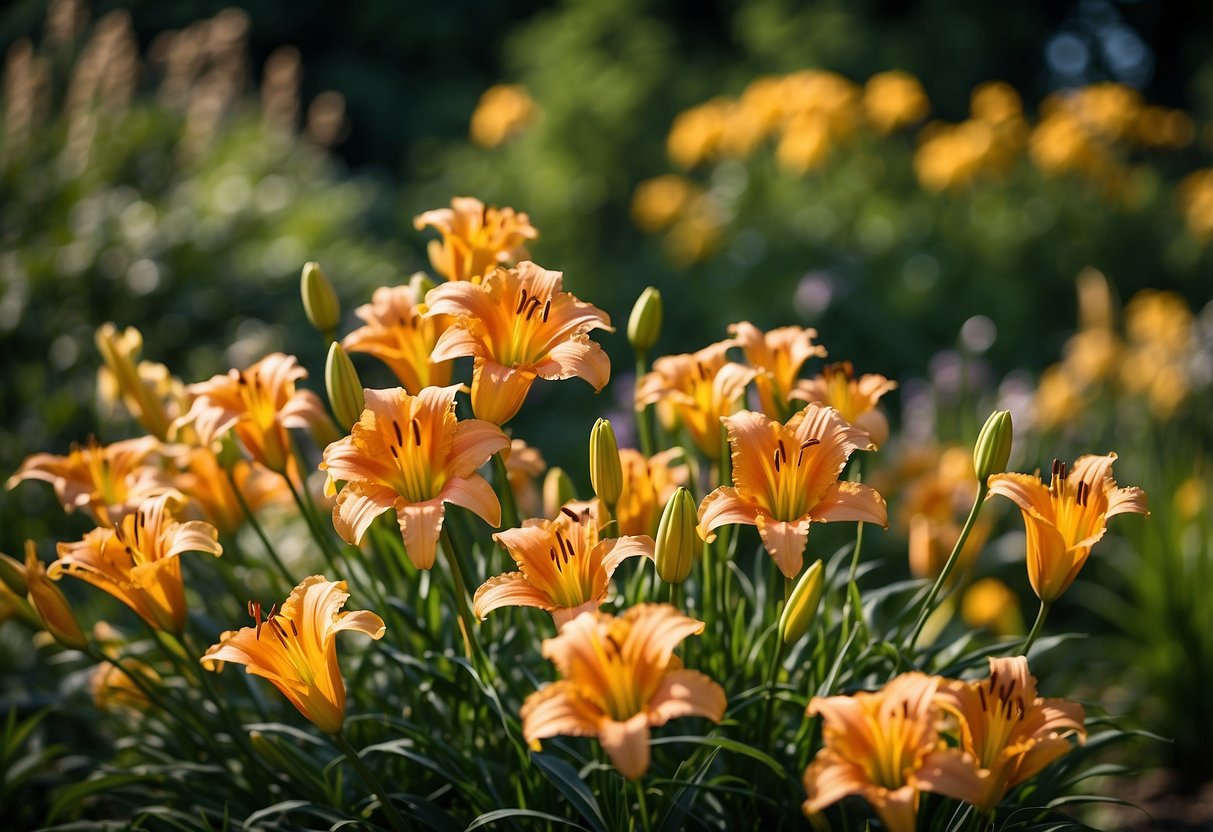
Daylilies love full sun and thrive when they get at least six hours of direct sunlight each day. They are perfect for bright, sunny spots in your garden.
When planting daylilies in full sun, make sure the soil is well-drained and rich in nutrients. Adding compost can help enhance the soil quality.
Choose varieties like the Stella de Oro or Happy Returns, known for their resilience in sunny conditions. They bloom beautifully and add vibrant colors to your garden. Learn more about these varieties here.
4) Using Daylilies as Ground Cover
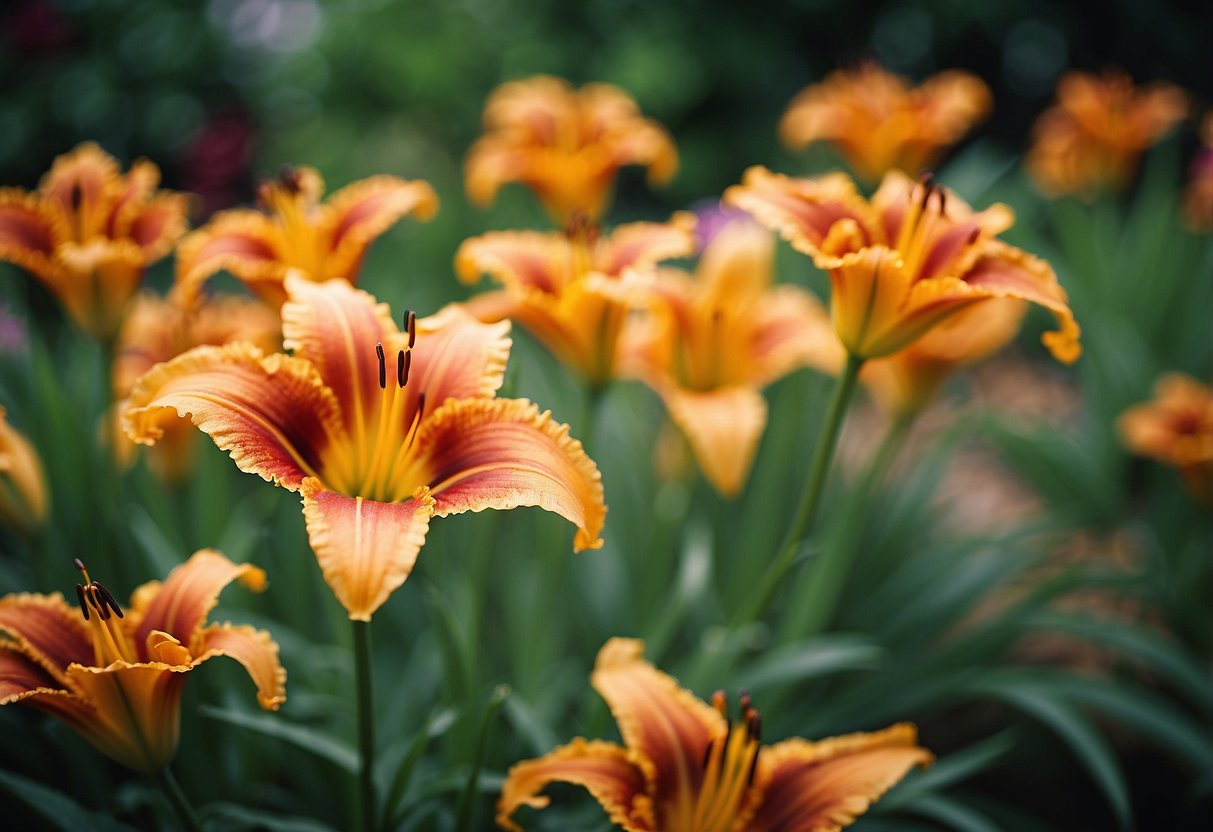
Daylilies are excellent for covering large areas in your garden. They grow quickly and fill in gaps with their lush greenery.
These plants help suppress weeds, making your garden easier to maintain. Their thick foliage keeps the soil cool and moist.
Daylilies can edge pathways or anchor slopes, preventing soil erosion. They add beauty while serving a practical purpose.
For more tips on using daylilies as ground cover, you can explore different landscaping ideas.
5) Companion Plants for Daylilies

Pairing daylilies with other plants can make your garden more beautiful. Hostas are a great choice. Their broad, textured leaves contrast nicely with the tall, graceful stems of daylilies (source).
Ornamental grasses like switchgrass also work well. These grasses add texture and movement to your garden (source).
Consider planting bee balm. It thrives in full sun and has vibrant flower heads. This can add color to your garden when daylily blooms begin to fade (source).
6) Daylilies in Rock Gardens
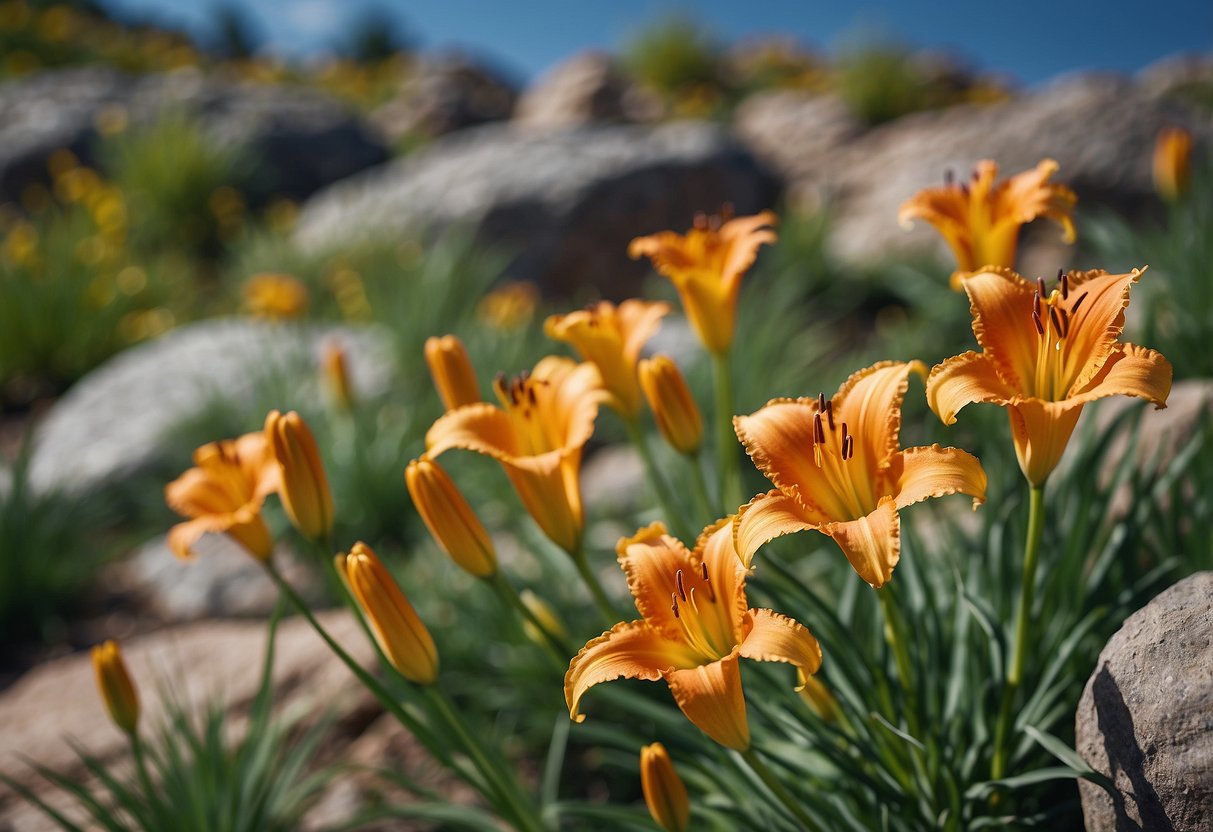
Daylilies are perfect for rock gardens. Their vibrant flowers bring a splash of color to rocky areas.
You can plant dwarf daylilies between rocks or in small crevices. They add a nice contrast to the hard, grey stones.
Daylilies grow well in well-drained soil, making them ideal for rock gardens. You’ll find they need little maintenance and thrive with minimal care.
For more ideas, check out these daylily-filled garden plans for inspiration. These tips help you create a beautiful and low-maintenance garden.
7) Ornamental Grasses with Daylilies

Ornamental grasses are great companions to daylilies. They add texture and movement to your garden. Grasses like switchgrass and fountain grass create a beautiful contrast with the bold colors of daylilies.
Blending grasses with daylilies can also help with weed control. The dense foliage of grasses acts as a natural barrier, keeping unwanted plants at bay. This makes for a low-maintenance garden.
For a mix of heights and textures, try combining taller grasses with shorter daylilies. This setup adds visual interest and layers to your garden. Make sure to choose grasses and daylilies suited to your climate.
8) Planting Daylilies by Fences

Daylilies look great next to fences. They thrive in full sun and well-drained soil, making them perfect for such spots. The bright colors of daylilies create a stunning contrast against any fence.
You can also use daylilies to edge pathways along the fence. This setup encourages foot traffic to stay on designated paths and keeps your garden neat. For more ideas, check out some daylily gardening tips.
If you pick the right daylily varieties, you’ll enjoy continuous blooms that add charm to your fence line throughout the summer.
9) Daylilies Around Water Features
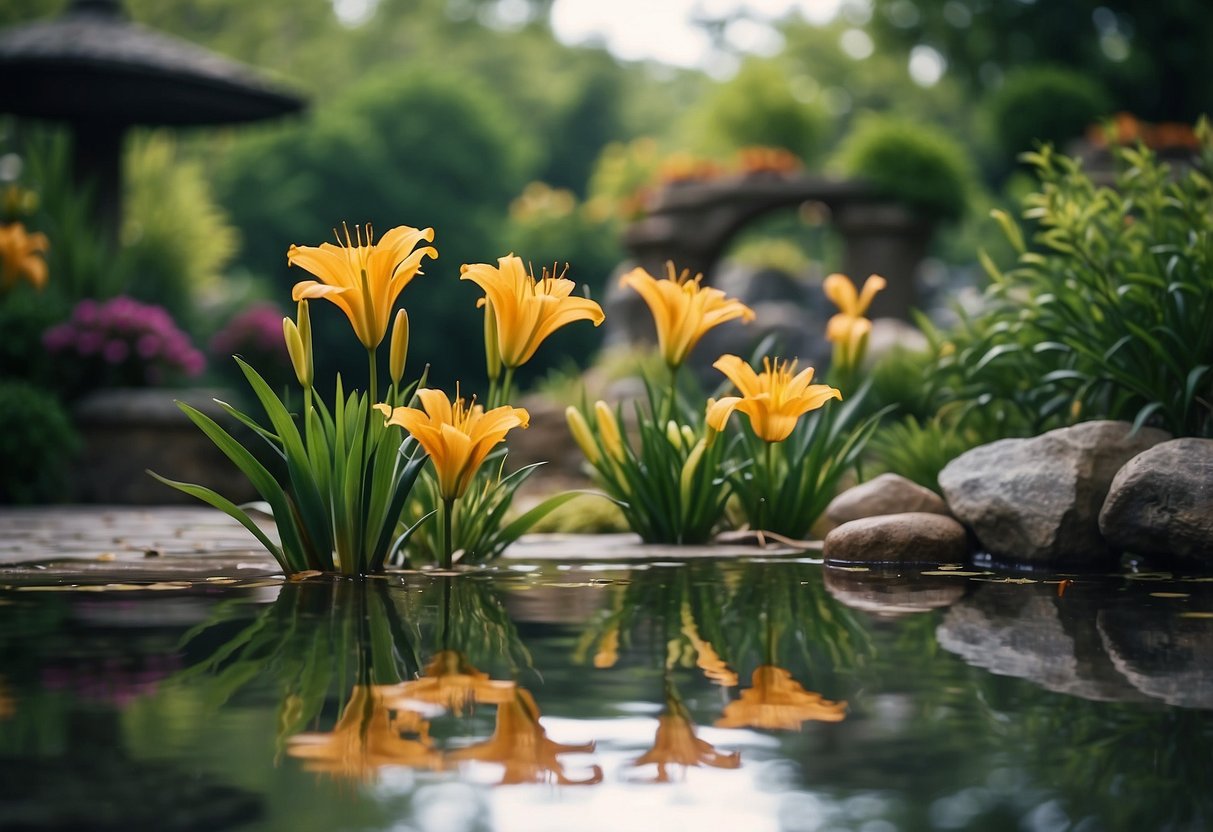
Planting daylilies near water features adds both color and charm to your garden. You can place them beside a pond, fountain, or small waterfall.
Daylilies thrive in well-drained soil, making them perfect for borders around water features. Although they don’t tolerate very soggy soil, they add a pleasant, lush appearance when nearby.
Choose different colors and heights to create a visually appealing display. The brilliant flowers and gently waving foliage of daylilies look lovely reflected in the water. For more ideas, check out how to grow daylilies near water features.
10) Seasonal Daylily Blooms

Daylilies can brighten your garden across different seasons. Some varieties start blooming in early spring, offering a splash of color when most other plants are just waking up.
By midsummer, you can enjoy mid-season varieties that fill your space with vibrant colors. Many reblooming types keep your garden lively well into fall, giving you beautiful blooms for months.
Explore daylilies such as Rainbow Rhythm ‘Going Bananas’ for their extended blooming period. Daylilies like these are ideal for gardeners who want continuous color and minimal effort.
Planning Your Daylily Garden
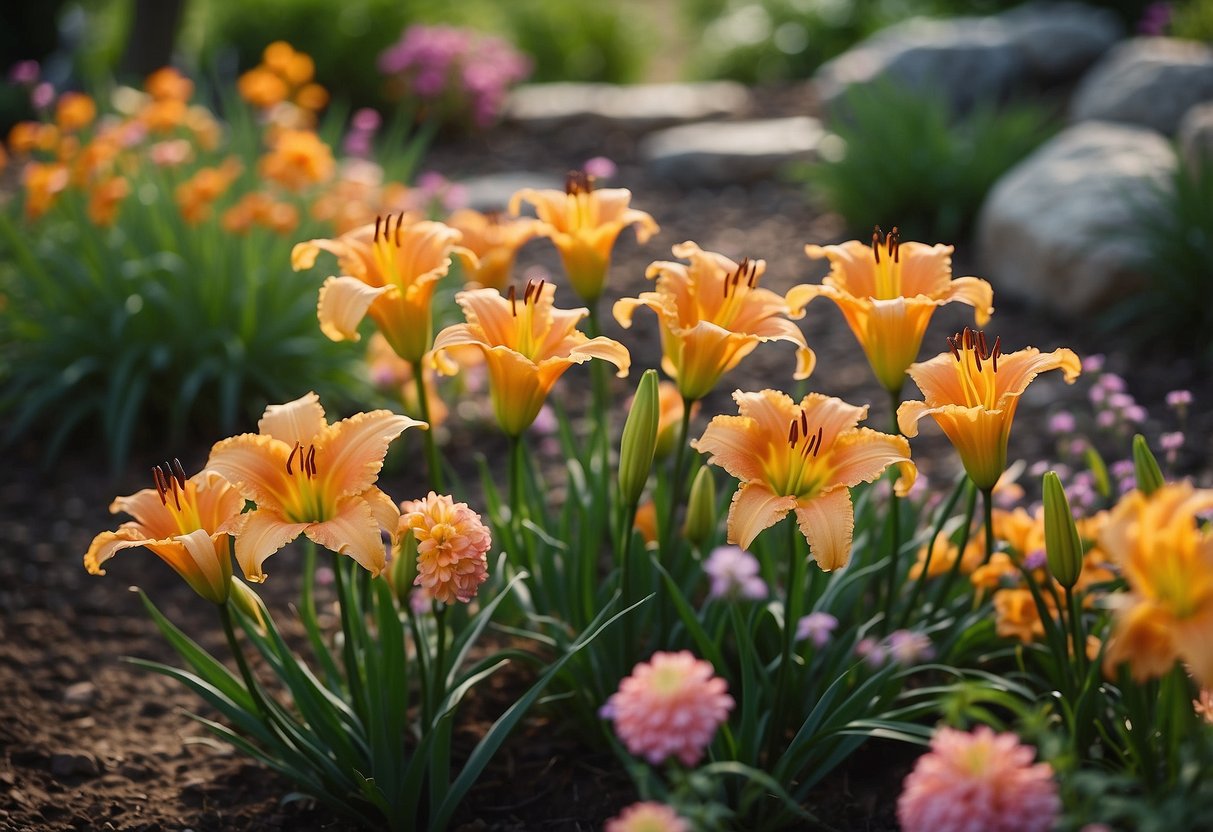
Planning a daylily garden involves selecting an optimal location with ample sunlight and preparing soil that promotes healthy growth. Here’s how to get started.
Choosing the Right Location
Daylilies thrive in locations that receive full sun for at least six hours a day. Look for spots in your garden that aren’t shaded by trees or buildings. If you live in a particularly hot climate, consider areas with partial afternoon shade to protect the plants from intense heat.
Daylilies can adapt to a range of conditions but prefer well-drained soil. Avoid low-lying areas where water tends to collect, as this can cause the roots to rot. Position your daylilies near walkways, borders, or edges of gardens for a stunning visual impact. Keep in mind that daylilies also make great companions to other plants like hostas and impatiens, adding variety and color to your landscape.
Soil Preparation
Good soil preparation is crucial for a thriving daylily garden. Start by testing the soil pH, aiming for a neutral range of 6.0-6.8. You can use a simple pH testing kit available at garden centers. If the pH is too low (acidic), add lime to raise it. If it’s too high (alkaline), incorporate sulfur.
Next, improve the soil quality by mixing in organic matter such as compost or well-rotted manure. This enhances drainage and provides nutrients for your daylilies. Work this organic matter into the top 12 inches of soil using a garden fork. Ensure the soil is loose and crumbly, which aids root development and water infiltration.
Mulching around your daylilies can help retain moisture, suppress weeds, and regulate soil temperature. Apply a 2-3 inch layer of mulch, but keep it a few inches away from the base of the plants to prevent rot. Regularly check soil moisture levels, watering deeply during dry spells to keep your daylilies healthy and vibrant.
Daylily Care Tips

To keep your daylilies healthy and blooming, focus on proper watering, fertilization, and managing pests and diseases.
Watering Schedule
Daylilies need consistent moisture, especially during the growing season. Water them deeply about once a week, ensuring the soil stays moist but not waterlogged. During hot or dry spells, increase the frequency to keep the soil from drying out.
Tip: Water in the morning to reduce the risk of fungal diseases. If you’re using a sprinkler, make sure the foliage has time to dry out before evening. Mulching around the plants can help retain moisture and reduce the need for frequent watering.
Fertilization Practices
Daylilies benefit from regular feeding. Apply a balanced fertilizer (10-10-10) in early spring as new growth begins. A second application can be made after the first round of blooms to encourage further flowering.
Tip: Avoid over-fertilizing, as this can lead to lush foliage at the expense of blooms. You can also incorporate compost into the soil to provide nutrients. For container-grown daylilies, use a liquid fertilizer every 4-6 weeks during the growing season.
Pest and Disease Management
Daylilies are generally hardy, but they can still be affected by pests and diseases. Common pests include aphids and spider mites. You can control these by spraying with insecticidal soap or a strong stream of water.
Tip: Check plants regularly for signs of damage or disease like yellowing leaves or spots. If you spot rust or leaf streak, remove and destroy affected foliage. Ensure good air circulation around your plants by spacing them properly to help prevent fungal infections.
By following these simple care tips, your daylilies will thrive, bringing vibrant color to your garden.







